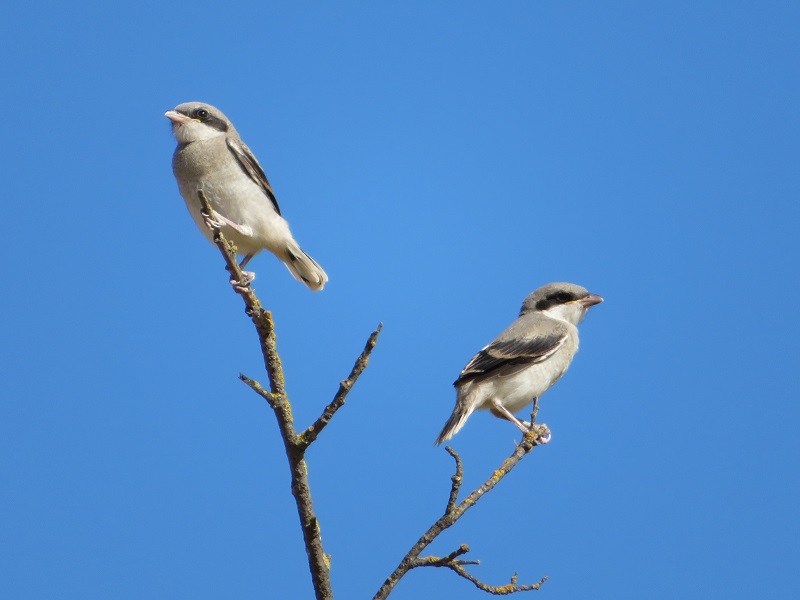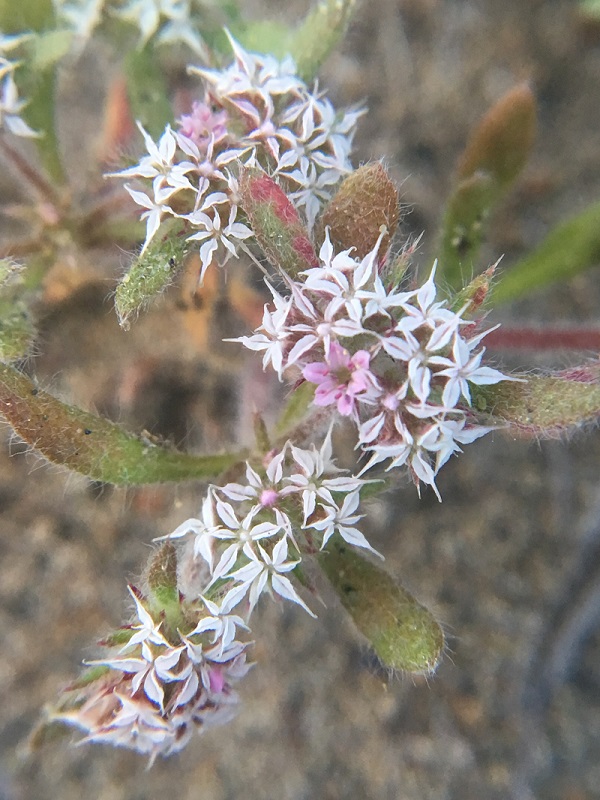
Lanius ludovicianus – loggerhead shrike
Submitted by Ross Wilming
These juvenile loggerheads were observed looking quite regal atop this bare tree branch in Contra Costa County near Doolan Canyon. Young loggerhead shrikes have more brown coloring than adults with more prominent brown on the chest. When these birds are fully mature, they will have developed a thick hooked bill as well as whiter coloring. The loggerhead shrike is a California Bird Species of Special Concern and is present mostly year-round here. Its range spans throughout most of California, excluding the Sierra Nevada and the northwest portion of the state. Even though population numbers are large for this species, they are still declining. Large clutch sizes as well as natural habitat preservation will hopefully allow this species to rebound in California. Loggerhead shrikes snack on insects and smaller vertebrates such as reptiles, rodents, and birds. Though small and cute, loggerhead shrikes have a nickname of "butcherbird" and impale their prey on sharp thorns or barbed wires. Currently, the database has 110 loggerhead shrike occurrences mapped throughout its California range. Many thanks to Ross for capturing such a great photo!

Chorizanthe robusta var. robusta – robust spineflower
Submitted by Ryan Carle
This eye-catching California endemic was found by Ryan Carle in Santa Cruz County. Chorizanthe robusta var. robusta was originally listed in 1980 and was considered rare, but found in sufficient numbers and distributed widely. It is currently ranked as 1B.1 (rare or endangered in California and elsewhere; seriously endangered in California) in the California Rare Plant Ranking system. It is found in sandy or gravelly areas of maritime chaparral, openings of cismontane woodlands, coastal dunes, and coastal scrub. Chorizanthe robusta var. robusta ranges along the Central Coast into the San Francisco Bay Area. It blooms from April to September, perfect timing for those summer trips to the beach. Thank you, Ryan, for this great photo and all of the great work you do helping to conserve our rare plants!
Do you have some great photos of rare plants or wildlife detections? Submit them along with your findings through our Online Field Survey Form and see if your photos get showcased!